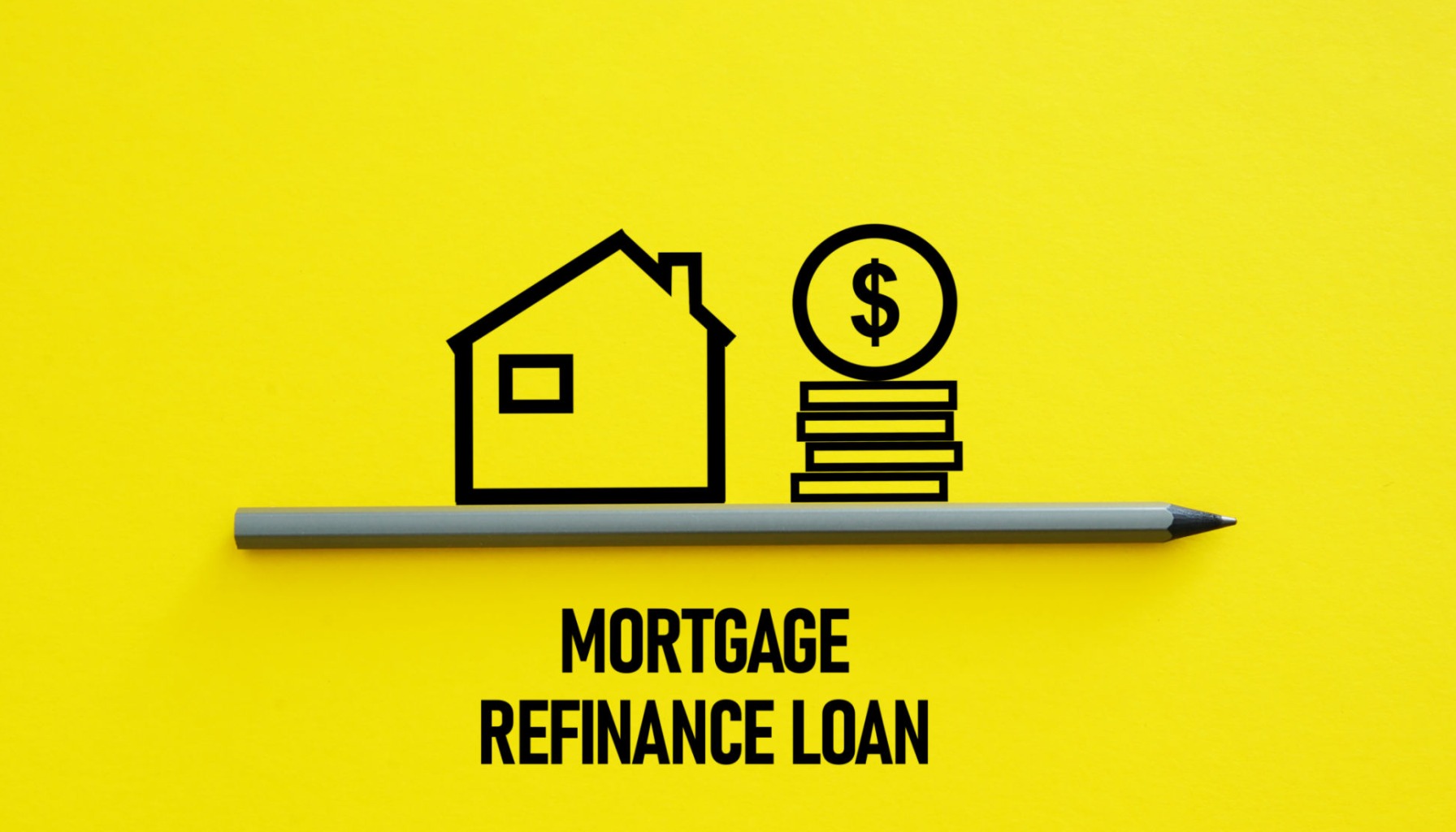If you've been watching mortgage rates like a hawk, I have some good news! According to Zillow, as of today, September 23, 2025, the national average 30-year fixed refinance rate dipped below 7%, landing at 6.82%. This decrease of 24 basis points from the previous rate of 7.06% could mean significant savings for homeowners looking to refinance.
But, what does this mean for you, and is now the right time to jump in? Let's break it down.
Mortgage Rates Today: 30-Year Fixed Refinance Rate Goes Down Below 7%
What's Happening with Mortgage Rates?
The mortgage world has been on a rollercoaster. Rising rates have made homeownership and refinancing a bit of a financial squeeze for many. This recent drop in the 30-year fixed refinance rate is a welcome change, offering a potential lifeline for homeowners. Additionally the 15-year fixed refinance rate sits at 5.83%, while the 5-year ARM refinance rate is at 7.29%.
Here's a quick snapshot:
| Loan Type | Current Rate (09/23/2025) | Previous Rate | Change (Basis Points) |
|---|---|---|---|
| 30-Year Fixed Refinance | 6.82% | 7.06% | -24 |
| 15-Year Fixed Refinance | 5.83% | 5.71% | +12 |
| 5-Year ARM Refinance | 7.29% | 7.18% | +11 |
Source: Zillow
Why the Drop? The Fed's Role
A big factor influencing these rates is the Federal Reserve, or “The Fed” as it's commonly known. On September 17, 2025, the Fed took a significant step by cutting its benchmark interest rate by a quarter of a percentage point (0.25%). That moves the rate range from 4.25%-4.5% to 4.0% to 4.25%. This was the first rate cut after hitting pause for five meetings in 2025.
This decision, labeled a “risk-management cut” by Fed Chair Jerome Powell, was driven by concerns about the economy showing signs of slowing down, even though inflation is still above the Fed's target of 2%. One key indicator was the slowing job market, which the Fed acknowledged in its statement. As of August, the unemployment rate was at 4.3%.
How Does the Fed Rate Cut Affect Mortgage Rates?
The Federal Reserve doesn't directly set mortgage rates. However, its actions have a ripple effect. The Fed's moves influence the 10-year U.S. Treasury yield, which is a key benchmark for 30-year fixed mortgage rates.
Think of it this way: Investors look at what the Fed is doing and make predictions about the economy's future. These predictions then influence the yield on those Treasury bonds, which in turn impacts the interest rates that mortgage lenders offer.
As of September 23, 2025, the 10-Year Treasury Yield sits at 4.137%, that's below the long-term average of 4.25%. As mortgage rates had already fallen in anticipation of the cut, the stabilization of the 10-year yield at its current levels supports the prospect of mortgage rates holding steady or declining further. The possibility of rates dipping below 6% by early 2026 remains on the table!
Important Caveats
I have to point out that predicting the future of rates is tricky business. The Fed has indicated that any further rate cuts will be highly dependent on the incoming economic data, particularly inflation and the labor market. The Fed’s ‘dot plot’ suggests two more cuts are likely in 2025. If inflation ticks back up, the Fed might reconsider cutting rates further, which could put upward pressure on mortgage rates.
Should You Refinance Now?
This is the million-dollar question, right? The answer is, it depends on your individual situation.
Here are some things to consider:
- Your Current Interest Rate: If your current mortgage rate is significantly higher than the current refinance rates, refinancing could save you money. As a general rule of thumb, If you're a homeowner with rates above 6.5%, I'd recommend actively exploring refinancing options.
- Refinance Costs: Refinancing isn't free. There are closing costs, application fees, and other expenses to factor in. You'll need to calculate whether the long-term savings outweigh the upfront costs.
- Your Financial Goals: Are you looking to lower your monthly payments? Shorten your loan term? Or tap into your home equity? Your refinancing goals will impact whether it makes sense to refinance now.
Fixed-Rate vs. Adjustable-Rate Mortgages (ARMs)
- Fixed-Rate Mortgages: If you already have a fixed-rate mortgage, your monthly payments won't change unless you refinance. New buyers, on the other hand, can take advantage of these lower rates.
- Adjustable-Rate Mortgages (ARMs): Borrowers with ARMs will likely see their rates decrease at the next adjustment period, as these rates are tied to short-term indices that directly follow the Fed's moves.
Impact on the Housing Market
Lower mortgage rates have a positive impact on the housing market as a whole:
- For Buyers: Lower rates increase affordability and purchasing power.
- For Sellers: Increased buyer activity leads to more competition and the rate decline may encourage “rate-locked” homeowners (those with sub-3% pandemic-era rates) to list their properties and increase inventory.
A Word of Caution
If a flood of new buyers enters the market without a corresponding increase in available homes, we could see prices start to climb again. This could partially offset the benefits of lower financing costs.
What to Watch For
In the coming months, keep a close eye on:
- Inflation Reports: Any resurgence in consumer prices will likely halt further rate cuts.
- Labor Market Data: Further weakening in the job market will make a stronger case for more aggressive Fed action.
Recommended Read:
30-Year Fixed Refinance Rate Trends – September 22, 2025
My Thoughts and Recommendations
From my perspective, this slight dip in mortgage rates is definitely something to watch. It's a small window of opportunity for some, but it's not a guaranteed path to riches. Before jumping into a refinance, carefully assess your financial situation, explore various loan options, and don't hesitate to seek advice from a qualified financial advisor.
As I said before If you are a current buyer, the rate cut and subsequent lower Treasury yields solidify a more favorable lending environment. It's a good time to lock in a rate if you are planning to buy a home right now, and shopping around is crucial!
In Conclusion
The drop in the 30-year fixed refinance rate below 7% is a positive development for homeowners and potential buyers alike. However, it's crucial to remember that the housing market is complex, and many factors can influence mortgage rates. By staying informed and carefully considering your individual circumstances, you can make smart financial decisions that align with your goals. So stay informed, crunch the numbers, and happy house hunting (or refinancing)!
Maximize Your Mortgage Decisions
Thinking about whether to refinance now? Timing is critical, and having the right strategy can save you thousands over the life of your loan.
Norada's team can guide you through current market dynamics and help you position your investments wisely—whether you're looking to reduce rates, pull out equity, or expand your portfolio.
HOT NEW LISTINGS JUST ADDED!
Talk to a Norada investment counselor today (No Obligation):
(800) 611-3060
Recommended Read:
- When You Refinance a Mortgage Do the 30 Years Start Over?
- Should You Refinance as Mortgage Rates Reach Lowest Level in Over a Year?
- NAR Predicts 6% Mortgage Rates in 2025 Will Boost Housing Market
- Mortgage Rates Predictions for 2025: Expert Forecast
- Half of Recent Home Buyers Got Mortgage Rates Below 5%
- Mortgage Rates Need to Drop by 2% Before Buying Spree Begins
- Will Mortgage Rates Ever Be 3% Again: Future Outlook
- Mortgage Rates Predictions for Next 2 Years
- Mortgage Rate Predictions for Next 5 Years
- Mortgage Rate Predictions for 2025: Expert Forecast



